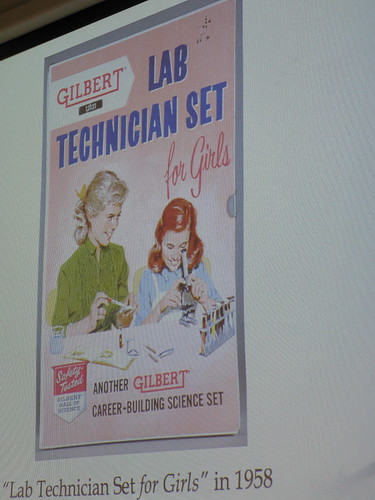those eyes, man! Those EYES! [...] it will be staring at you, waiting to make its move, plotting your demise - or at least that's what it feels like. Maybe if the head didn't have such an accusatory look on its face ("WHAT HAVE YOU DONE TO ME?") [...] "Merry Christmas Timmy! Here's your CSI Facial Reconstruction head. Now you can reconstruct the ruined face of the victim of a violent and gruesome murder!"When did forensics become entertainment? Moreover, when did it become so domesticated it could be packaged into a childrens’ toy? It's about death and crime. The slide of this toy was met with several laughs at the conference. For me, however, it was the lack of humour embodied by the product itself which interested me.
It reminded me a bit of The Planet Science Whodunit, a forensic education event for teenagers I worked on back in 2003. The premise was that someone had stolen a guitar from boy-band Busted. Schoolchildren could sign up for kits to do some forensics-inspired activities to “solve” the crime. There were prizes; we had a panel of celebrity suspects; it was all played for fun. Although in many respects this project was inspired by CSI, we were careful to limit any references to traumatic crime. It was lighthearted. Indeed, one of the criticisms that could be leveled at this project was that it trivalised issues surrounding crime.
Another comparison with the CSI toy is the style applied by Horrible Science (major UK brand of science books for 7-11's, I did my PhD on them). Perhaps the best example of their approach to blood and guts is the covers of Blood, Bones and Body Bits (1995, and 2008). Here, Horrible Science wraps its dismembered bodies, blood and viscera in a comic book form.

It's ok somehow because it's "just for fun". Blood and guts take center stage here, but in a very comic way. It knows "those eyes, man! Those EYES!" are following you, it camps it up deliberately. It doesn't take itself seriously and doesn't expect you to either. It's childish and Bugs-Bunny like, it's surreal and so slightly unreal through it's comic qualities. This is an example of what I described in my thesis as Horrible Science’s “ironic bloodthirsty pose”, something you can see applied across the series, to lesser and greater degrees than in the Horrible Histories, depending on topic. It is one of the many ways in which the series are "Science as Pantomime" (title I gave my thesis).
I took "ironic bloodthirsty pose" from David Buckingham’s great book on children and television, where he listens to children explain what they like about watching horror. One of the points Buckingham makes from these conversations is the appeal of a sense of adulthood in watching horror. For all their slightly childish joking, in some respects what the young people relished was the seriousness of it all, it helped them create distance from an idea of a trivial silly little kid. I remember feeling that the Whodunit idea was a bit more grownup than other Planet Science projects I'd worked on, the allusions to forensics were a key part of that, even framed as a joke.
You can find some more discussion of such ambivalences in Martin Barker's excellent history of a campaign in 1960s Britain against horror comics. I've blogged on this before: why the Horrible books might be illegal. As I mention there, Horrible Histories author Terry Deary has argued that his approach wouldn't have been possible if Roald Dahl hadn't already brought about an acceptability of the grotesque in British children's literature. Or, for slightly different analysis, Jane Kenway and Elizabeth Bullen, in their book Consuming Childhood, also talk about the way contemporary children's media tries to make children "aspirational", to want to act more grownup, as a sort of marketing strategy (see also this and this on such late 20th century shifts in style of address in children's media).
So, considered from the perspective of the comic-gore of Horrible Science, the CSI facial reconstruction kit seems odd that it doesn't frame itself in humour jokes (though we may laugh at it). Maybe, conversely, the seriousness allows for the gruesome-ness in a US context, where edu-tainment media tends not to have comic-gore and irreverence of Britain's Horrible books? A rather straightforward example of forensic science lending a form of legitimacy, even in kids' media?
That said, it looks as if the company who make these toys has gone bust, so maybe everyone had the WTF reaction of the "those eyes, man! Those EYES!" comment on Amazon.

